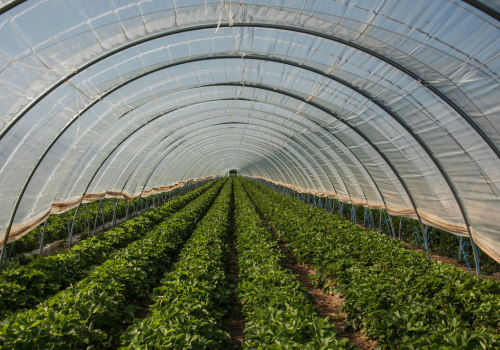
In the world of plastics manufacturing, one crucial factor that often determines the suitability of plastic film materials for various applications is their mechanical properties. How well are they able to withstand the rigors of everyday use, harsh environments, and the demands of their intended application? The answer to these questions lies within the fascinating realm of plastics orientation, a process that significantly enhances the strength and resilience of plastic film.
What exactly is plastics orientation?
Plastics orientation is a manufacturing process which involves modifying the molecular chain alignment within polymer films like polypropylene (PP), polyester (PET), and polyethylene (PE) by heating and mechanically stretching them with specialized orientation machines. The key benefit of orienting the film in this manner is the resulting increase in material yield which comes from down-gauging the film’s thickness. Equally important is that this down-gauging enables the plastic film to generally retain its physical properties and even attain specific enhanced performance advantages in terms of mechanical, optical, barrier and porosity characteristics, all while less material is being used. In this article, we will concentrate on the mechanical properties improved by the plastics orientation process, detailing what these specific properties are and providing examples of applications that benefit from their enhancement.
What are the mechanical properties of oriented plastic films?
Tensile Strength: During the plastics orientation process, the polymer chains in the plastic material are aligned in a specific direction. This alignment leads to increased tensile strength, meaning the material is able to withstand greater tensile (stretching) forces without breaking or tearing. Consequently, plastic films will become less vulnerable to damage during handling, transportation, and final use.
Tear Resistance: When force is applied to a plastic material that has been previously oriented, the aligned polymer chains distribute the stress of this force more evenly, preventing tears from occurring. This characteristic is especially valuable for applications in which plastic films will need to endure rough conditions, as they do in the outdoor agricultural or construction markets.
Impact Resistance: Not only does plastics orientation strengthen materials, but this polymer alignment technique also enhances the ability of these same materials to absorb and release impact energy. This attribute is critical for applications in which films are consistently exposed to potential impacts, as they are in the protective packaging.
Elongation: Due to the alignment of polymer chains in the oriented direction of the plastic film or sheet, the material will be able to be stretched much further in this direction without any consequent damage. An example of this elongation enhancement is found in drawstrings for trash bags, which can be extended as much as possible in withstanding the weight of the trash bag and still will only stretch instead of breaking.
Stiffness: The plastics orientation process leads to greater crystallinity within the material, meaning the film or sheet will have a more structured and rigid molecular arrangement when compared with amorphous regions in polymer chains that are more randomly arranged. Due to this improved balance of flexibility and structural integrity along with barrier enhancement, oriented films are greatly beneficial to the flexible packaging industry, as there is sufficient support for the material to hold its packaging shape on the shelf.
Shrinkage Abilities: When a material is uniaxially oriented in either the machine direction (MD) or the transverse direction (TD), this enhanced polymer alignment in one of these directions permits better control over shrinkage, specifically in the context of shrink film packaging. Because the film will shrink more evenly when oriented in either direction, it means the film will provide a uniform coverage around the product being wrapped, an essential factor in achieving tight and wrinkle-free shrink sleeves and labels.
Which are the primary applications to benefit from oriented films?
Packaging: Oriented plastic films are utilized extensively in packaging applications, in which they must withstand the daily stresses of transportation, storage, and handling by end users.
Agriculture: Films used in agriculture, such as mulching films and greenhouse covers, especially benefit from improved tear resistance and durability provided by plastics orientation. Endurance of these plastic films ensure crop longevity during the most vulnerable stage of plant growth.
Construction: Durable plastic films play a vital role in the construction industry, serving as vapor barriers, protective coatings, and even structural components in some unique cases.
Medical: Oriented films are often utilized in medical applications such as wound dressings and medical devices, in which strength and tear resistance are essential components to ensuring patient safety and wellbeing.
Plastics orientation is a transformative process which elevates performance of plastic films to new heights. Through aligning polymer chains to enhance the film’s mechanical properties, engineers are utilizing orientation to make these materials more suitable for a wide array of applications that require enhanced mechanical performance, especially those in the packaging, agriculture, construction, and healthcare markets. As we continue to innovate plastics manufacturing, the role of orientation in enhancing mechanical properties will remain pivotal, enabling us to meet the ever-evolving demands of modern applications.
At Parkinson Technologies, our Marshall and Williams Plastics biaxial orientation line of equipment is made to orient polymer-based materials to reach their greatest potential of strength and durability. For more information about our Marshall and Williams brand of biaxial orientation equipment, or to find which orientation type would be best suited to fit your unique business needs, please fill out the form below.